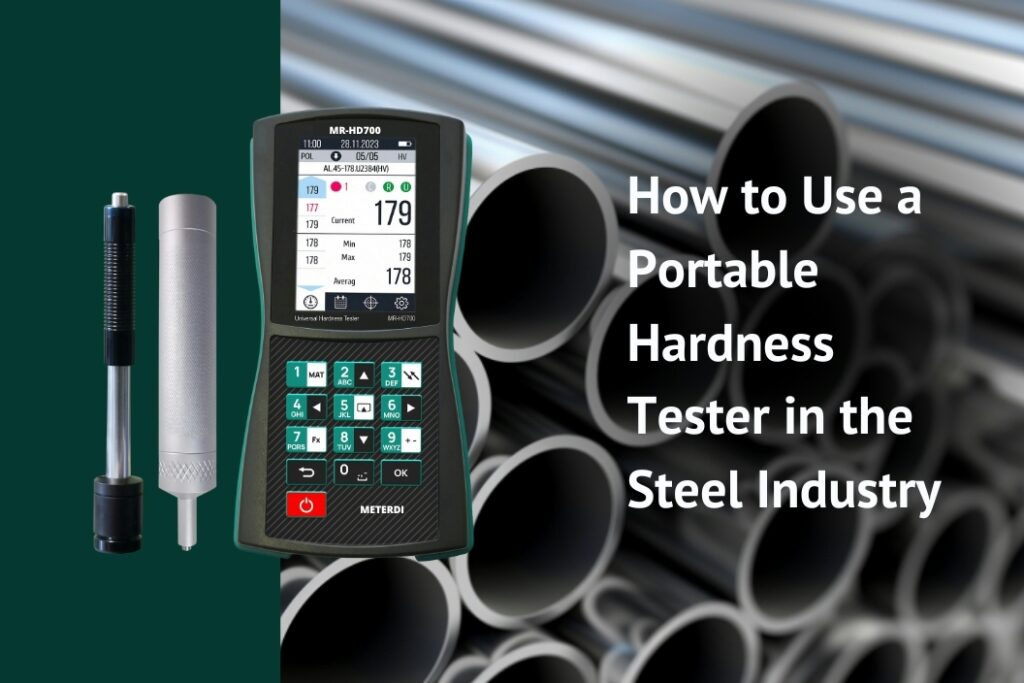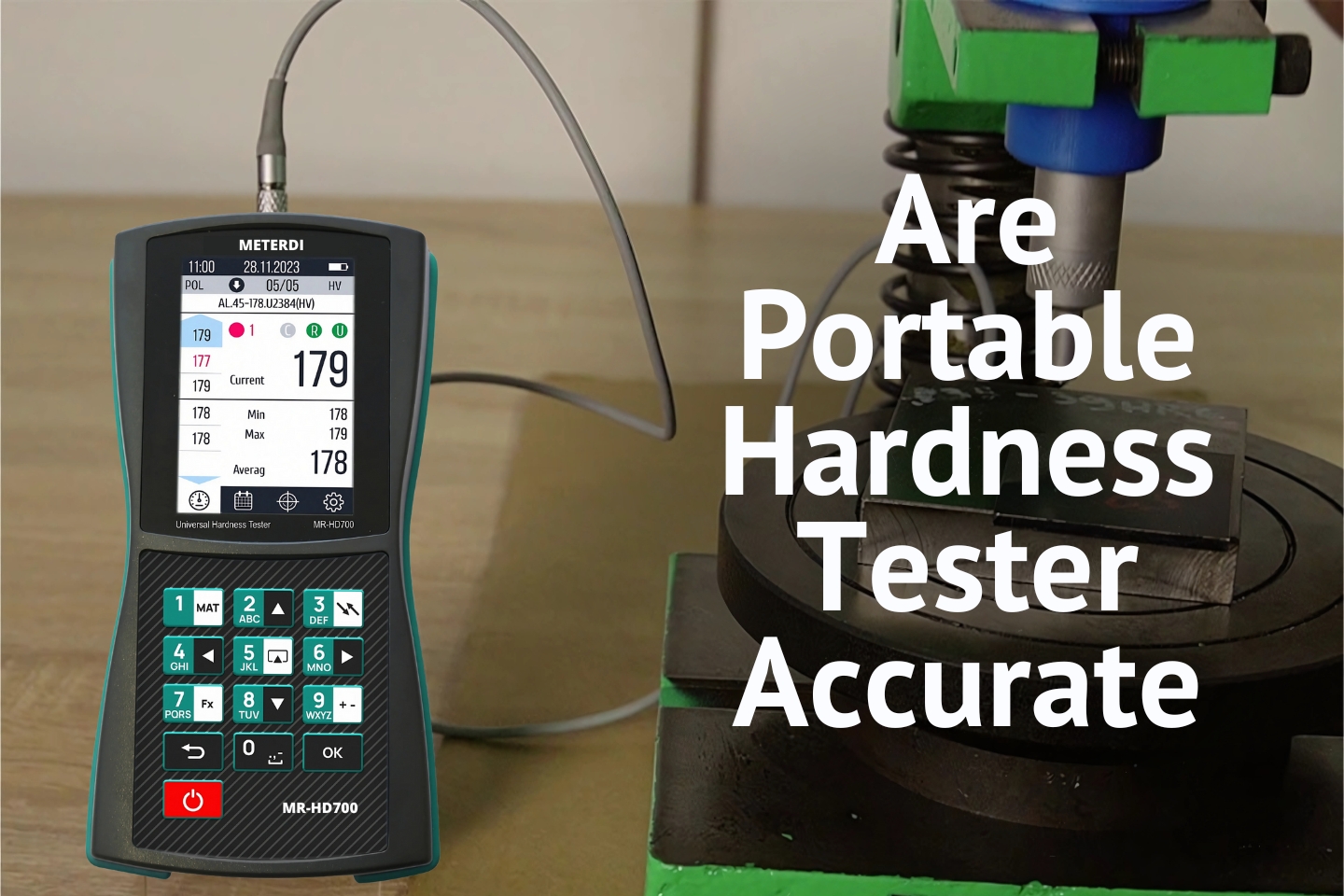Introduction
In the steel industry, ensuring product quality is paramount. Hardness testing plays a vital role in verifying material strength, durability, and performance. Among various tools available, a portable hardness tester stands out for its ease of use and versatility. This blog will guide you on using this device effectively while exploring types of hardness testers, the advantages of a portable hardness testing machine, and the features of a digital portable hardness tester.
Why Hardness Testing is Crucial in the Steel Industry
Hardness testing determines a material’s resistance to deformation, providing insights into its wear resistance, strength, and usability. For steel products like beams, plates, and pipes, hardness testing ensures compliance with industry standards and enhances reliability across applications.
Types of Hardness Testers
The steel industry uses various types of hardness testers, each serving specific needs:
- Brinell Hardness Testers (BHN): Measure large, coarse materials.
- Rockwell Hardness Testers (HRB, HRC): Common for steel, they offer quick and precise measurements.
- Vickers Hardness Testers (VHN): Ideal for thin materials and coatings.
- Portable Hardness Testers: Perfect for on-site applications, offering mobility and efficiency.
Why Use a Portable Hardness Tester?
A portable hardness testing machine allows on-site testing without needing to transport materials to a lab. Key advantages include:
- Lightweight and easy to carry.
- Capable of testing hard-to-reach areas.
- Provides fast and accurate readings.
- Suitable for non-destructive testing (NDT).
Step-by-Step Guide: How to Use a Portable Hardness Tester
- Prepare the Surface
Ensure the testing surface is clean, smooth, and free of debris. For curved or uneven surfaces, use a support fixture to stabilize the material.
- Select the Right Probe
Portable hardness testers often come with interchangeable probes. Choose a probe suitable for the material’s thickness and hardness scale.
- Calibrate the Tester
Calibration ensures accurate results. Use the reference block provided with the device to verify the tester’s accuracy.
- Position the Tester
Hold the portable hardness tester perpendicular to the surface. For vertical or overhead testing, ensure the device is firmly positioned to prevent errors.
- Perform the Test
Activate the tester by pressing the probe against the surface. The device will measure and display the hardness value, typically in Rockwell, Brinell, or Vickers units.
- Interpret the Results
Compare the obtained values with industry standards or product specifications to determine if the material meets quality requirements.
Advantages of Digital Portable Hardness Testers
A digital portable hardness tester enhances the testing experience with:
- Real-time digital display for easy reading.
- Memory storage for multiple test results.
- Data transfer capabilities via USB or Bluetooth.
- Enhanced accuracy and repeatability.
Tips for Effective Use
- Always calibrate the device before testing.
- Avoid testing near edges or holes for consistent results.
- Use a support ring for curved surfaces to stabilize the device.
- Follow the manufacturer’s instructions for maintenance and storage.
Conclusion
A portable hardness tester is an indispensable tool in the steel industry, offering flexibility and precision for quality assurance. Understanding the types of hardness testers, leveraging the capabilities of a portable hardness testing machine, and utilizing a digital portable hardness tester will ensure your steel products meet the highest standards.
Invest in a reliable portable hardness tester to boost efficiency and maintain quality in your operations.
FAQs
1. What is the most common type of portable hardness tester used in the steel industry?
The Leeb rebound tester is widely used due to its ease of use and suitability for large steel structures.
2. Can portable hardness testers measure coatings?
Some models, such as ultrasonic portable testers, can measure coatings and surface treatments.
3. How often should I calibrate my portable hardness tester?
Calibrate your device before each testing session to ensure accurate results.
- What is a Portable Hardness Tester?
- Benefits of Digital Portable Testing Machines
- Types of Material Testing in the Steel Industry
Explore a Wide Range of Portable Hardness Testers
Looking for reliable hardness testing solutions? Visit METERDI Portable Hardness Tester to browse durable, accurate, and easy-to-use hardness testing machines designed for the steel and manufacturing industries.




